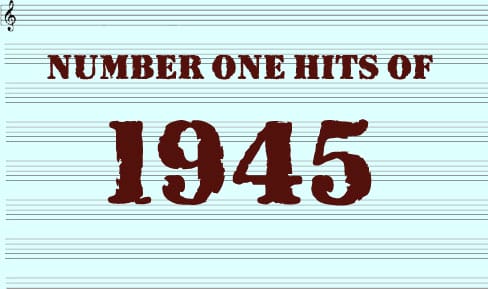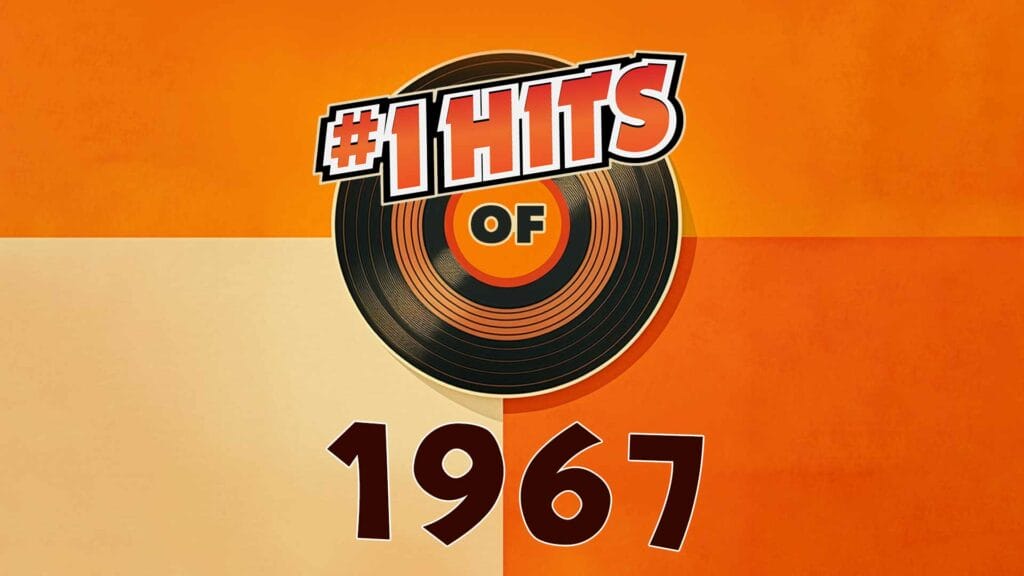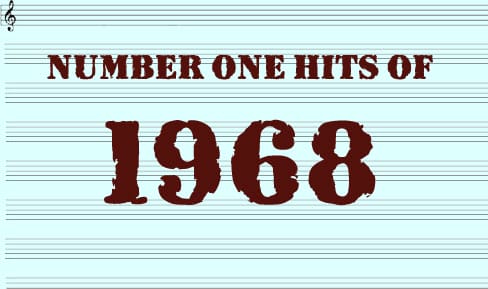 |
||||
|---|---|---|---|---|
The Number One Hits Of 1945 |
||||
| Dec 23, 1944 – Feb 9, 1945 Bing Crosby and The Andrews Sisters Don’t Fence Me In Bing Crosby was a renowned American singer and actor, while The Andrews Sisters were a popular vocal group of the 1940s. “Don’t Fence Me In” was written by Cole Porter and Robert Fletcher, inspired by the open expanse of the American West. |
||||
| Feb 10, 1945 – Feb 16, 1945 Bing Crosby & The Andrews Sisters (tie), The Andrews Sisters (tie) Don’t Fence Me In, Rum and Coca-Cola The Andrews Sisters were known for their tight harmonies, while Bing Crosby was a multimedia star during the Golden Age of Hollywood. “Rum and Coca-Cola” was written by Morey Amsterdam, Jeri Sullavan, and Paul Baron and became a controversial hit due to its suggestive lyrics. |
||||
| Feb 17, 1945 – Apr 6, 1945 The Andrews Sisters Rum and Coca-Cola The Andrews Sisters, composed of LaVerne, Maxene, and Patty, recorded over 400 songs in their career. “Rum and Coca-Cola” was based on a Trinidadian folk song, and its popularity helped to introduce calypso music to the American mainstream. |
||||
| Apr 7, 1945 – May 25, 1945 Les Brown and His Orchestra My Dreams Are Getting Better All the Time Les Brown was a prominent American jazz musician and bandleader. His band was known as the “Band of Renown.” Written by Vic Mizzy and Mann Curtis, “My Dreams Are Getting Better All the Time” featured Doris Day on vocals, who would later become a Hollywood star. |
||||
| May 26, 1945 – Jul 27, 1945 Les Brown and His Orchestra Sentimental Journey Les Brown’s orchestra included notable musicians such as saxophonist Dave Pell and trumpeter Bobby Hackett. “Sentimental Journey” was composed by Les Brown and Ben Homer, with lyrics by Bud Green. It became an anthem for soldiers returning home from World War II. |
||||
| Jul 28, 1945 – Sep 14, 1945 Johnny Mercer and The Pied Pipers On the Atchison, Topeka, and the Santa Fe Johnny Mercer was an accomplished songwriter and singer, and The Pied Pipers were a popular vocal group in the 1940s. The song was written for the film “The Harvey Girls” and won the Academy Award for Best Original Song. It was composed by Harry Warren with lyrics by Johnny Mercer. |
||||
| Sep 15, 1945 – Nov 16, 1945 Perry Como Till the End of Time Perry Como was a renowned American singer and television personality known for his warm, smooth, baritone voice. “Till the End of Time” was adapted from Chopin’s “Polonaise in A-flat major, Op. 53” and featured lyrics by Buddy Kaye and Ted Mossman. |
||||
| Nov 17, 1945 – Nov 23, 1945 Perry Como (tie), Sammy Kaye (tie) Till the End of Time, Chickery Chick Perry Como was known for his relaxed singing style, while Sammy Kaye was famous for his “Swing and Sway” dance music. “Chickery Chick” was written by Sylvia Dee and Sidney Lippman and became a novelty hit due to its playful, nonsensical lyrics. |
||||
| Nov 24, 1945 – Dec 7, 1945 Harry James and His Orchestra It’s Been a Long, Long Time Harry James was a trumpeter and bandleader who helped popularize swing music in the 1930s and 1940s. “It’s Been a Long, Long Time” was composed by Jule Styne with lyrics by Sammy Cahn, reflecting the joy of soldiers returning home from World War II. |
||||
| Dec 8, 1945 – Dec 14, 1945 Bing Crosby with The Les Paul Trio It’s Been a Long, Long Time Bing Crosby was one of the best-selling recording artists of the 20th century, while Les Paul was a guitarist and innovator. The Les Paul Trio’s rendition of “It’s Been a Long, Long Time” featured a more intimate arrangement, highlighting Les Paul’s guitar work. |
||||
| Dec 15, 1945 – Dec 21, 1945 Sammy Kaye and His Orchestra Chickery Chick Sammy Kaye’s music was popular during the Big Band era, and his band was known for its sweet and melodic tunes. “Chickery Chick” is considered one of the earliest examples of “scat singing” in popular music, which involves vocalizing improvised syllables instead of lyrics. |
||||
| Dec 22, 1945 – Dec 28, 1945 Harry James and His Orchestra It’s Been a Long, Long Time Harry James’ band featured a range of talented musicians, including vocalist Helen Forrest and saxophonist Willie Smith. The song symbolized hope and reunion for families separated by the war, and its popularity grew as more soldiers returned to their loved ones. |
||||
| Dec 29, 1945 – Jan 4, 1946 Sammy Kaye and His Orchestra Chickery Chick Sammy Kaye’s orchestra often featured vocalists such as Don Cornell, Laura Leslie, and Tony Alamo. “Chickery Chick” reached number one on the Billboard chart in 1945 and became one of the year’s most successful songs. |
||||
|
The Biggest Pop Artists of 1945 include: Charts based on Billboard music charts. |


